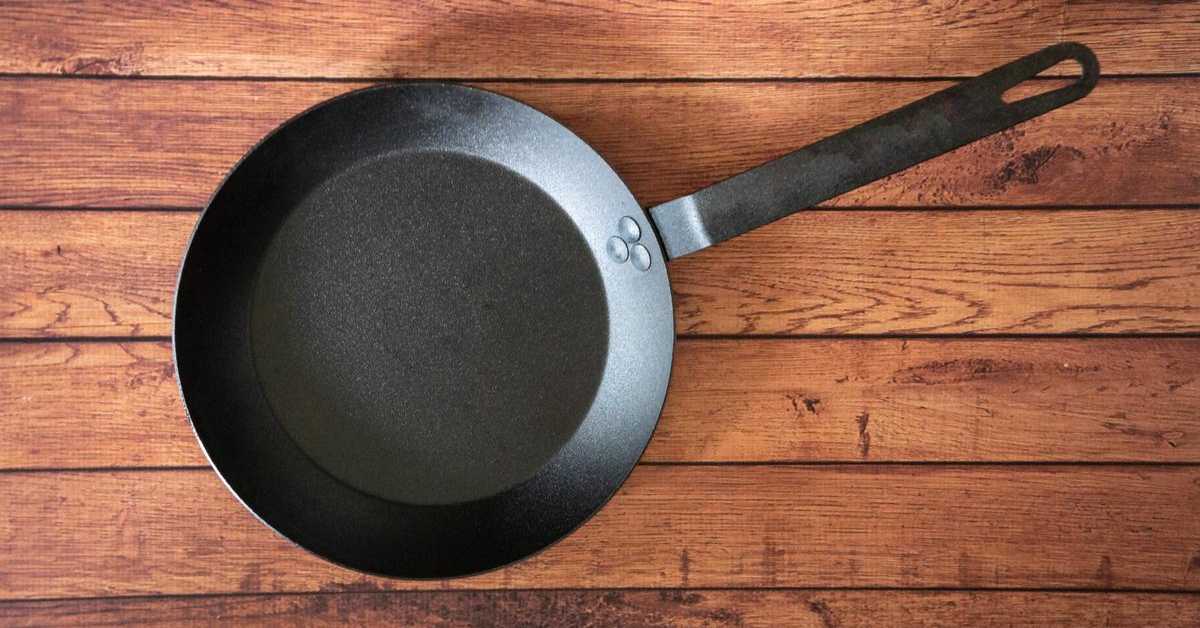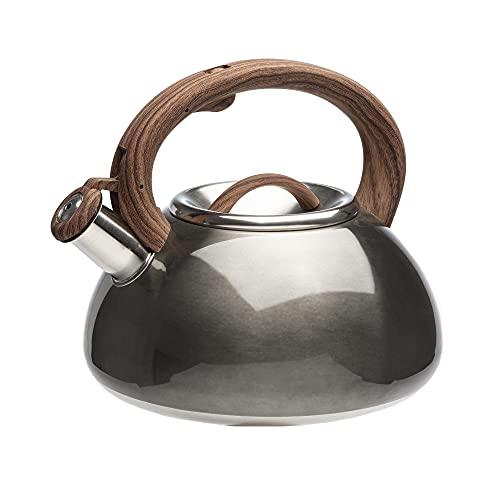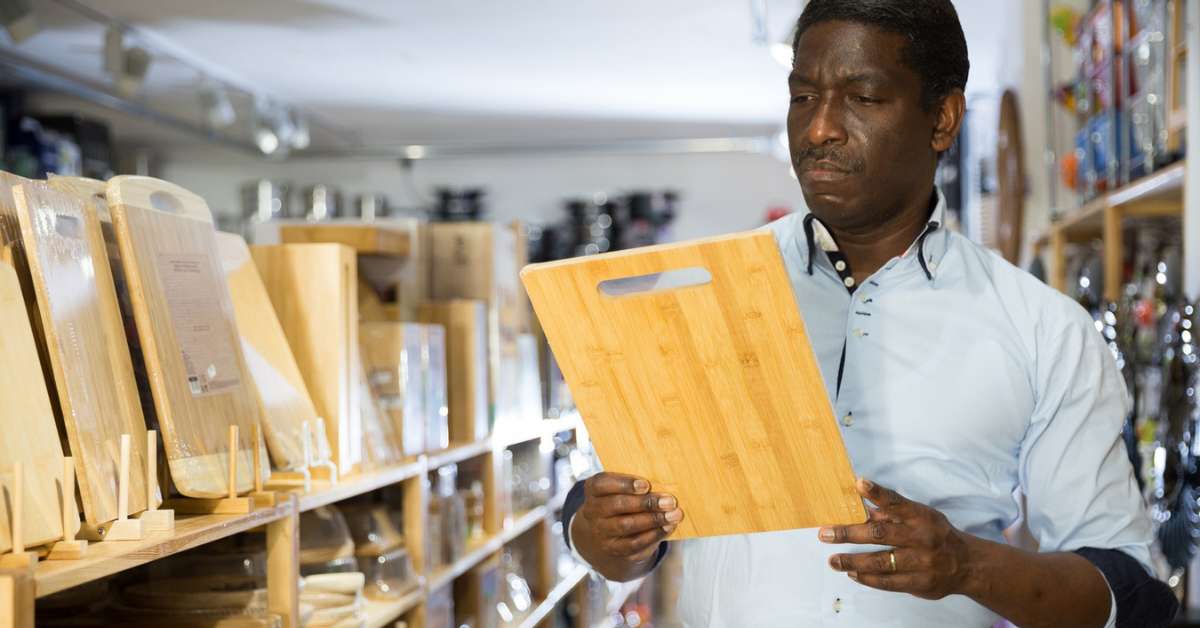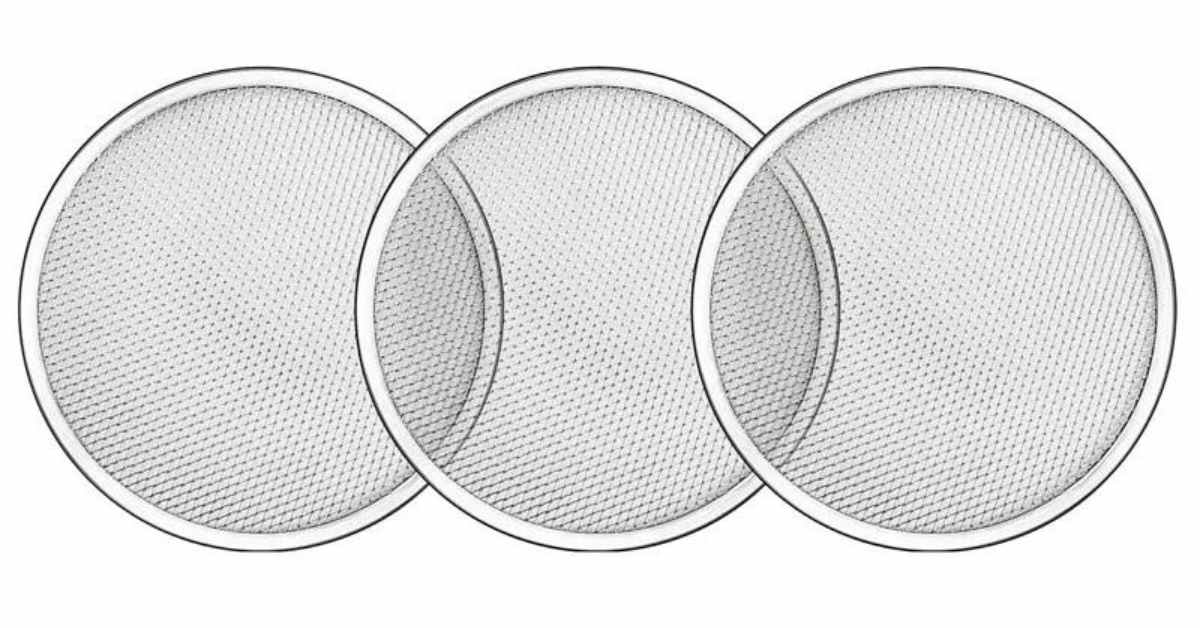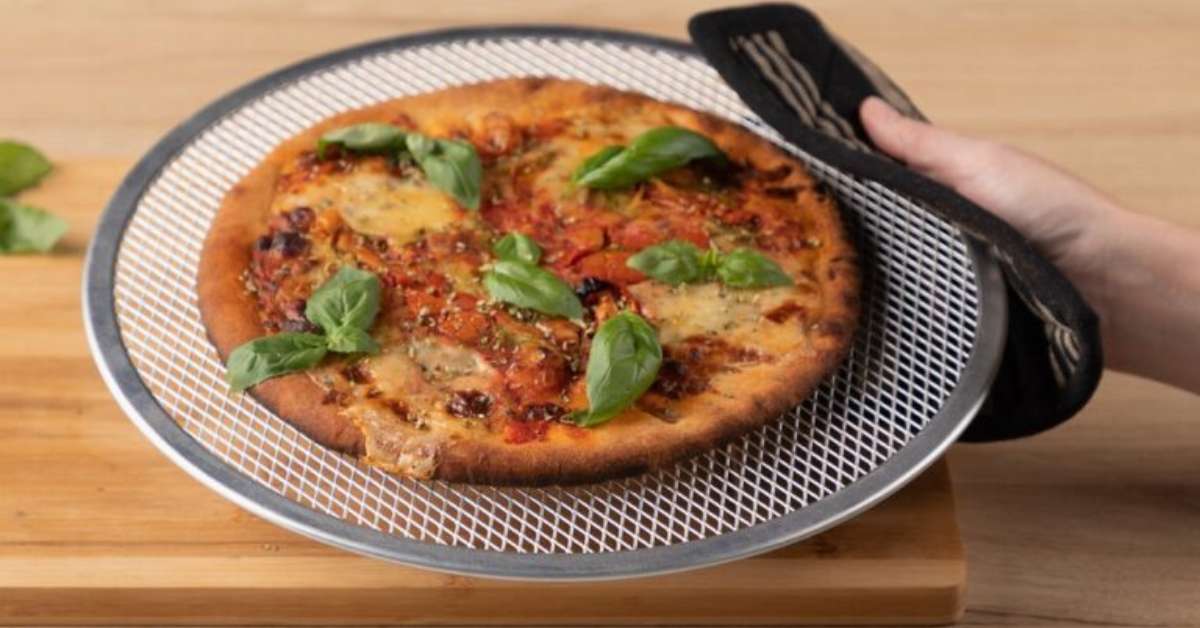If you’re an avid cook or enjoy spending time in the kitchen, you’ve likely come across the allure of carbon steel pans. These versatile and durable kitchen companions are popular among chefs and home cooks. However, with the growing concern about cookware safety, it’s essential to address the question: Are carbon steel pans safe to use?
In this article, we will delve into the truth about carbon steel pans, exploring their benefits, potential risks, and everything you need to know to make an informed decision about incorporating them into your culinary arsenal. Let’s dive in and uncover the facts behind these sleek and promising kitchen essentials.
Table of Contents
ToggleUnderstanding Carbon Steel Pans
Regarding cookware, carbon steel pans stand out as a remarkable choice due to their unique characteristics. These pans are constructed from an alloy of iron and carbon, with a dash of other elements to enhance their properties.
One notable feature of carbon steel pans is their excellent heat conductivity, ensuring an even heat distribution across the cooking surface. This means your food will be cooked more uniformly, minimizing the risk of hot spots.
Carbon steel pans are also prized for their versatility. From sautéing vegetables to searing steaks and baking delicate desserts, these pans can handle various cooking tasks. Moreover, they develop a natural non-stick surface with proper care and seasoning, making them a healthier alternative to traditional non-stick cookware that may contain harmful chemicals.
In terms of maintenance, carbon steel pans require attention to keep them in top shape. Unlike other materials, they are not dishwasher-safe and should be hand-washed and thoroughly dried after each use. Additionally, a light coat of oil applied after washing helps to maintain the seasoning and protect the pan from rust.
Benefits of Using Carbon Steel Pans
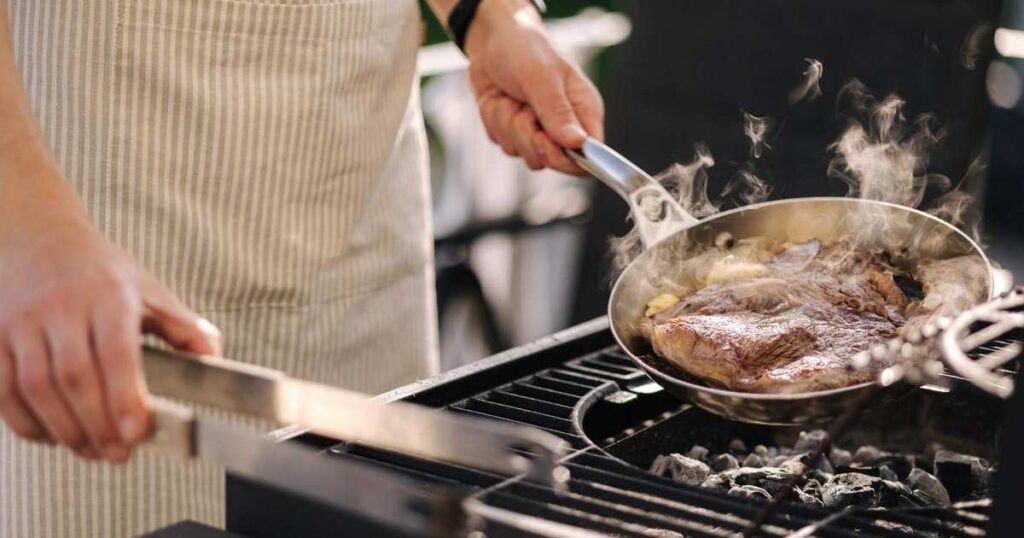
Lightweight and Versatile:
One of the most significant advantages of carbon steel pans is their lightweight nature. Unlike traditional cast iron cookware, carbon steel pans offer excellent maneuverability, allowing you to toss and flip ingredients quickly.
This feature is precious when dealing with delicate foods that require precise handling. Moreover, their versatility shines through as they seamlessly transition from stovetop to oven, accommodating various cooking techniques and recipes.
Durable and Long-lasting:
Investing in carbon steel pans means bringing home cookware built to last. These pans boast exceptional durability, withstanding high temperatures, and frequent use without showing signs of wear. With proper care and maintenance, carbon steel pans can serve you for a lifetime, making them a valuable addition to any kitchen arsenal.
Conducts Heat Evenly:
Achieving uniform heat distribution is crucial for cooking success; carbon steel pans excel. Thanks to their excellent heat conductivity, these pans ensure that every inch of the cooking surface receives the same heat. This even distribution minimizes the chances of unevenly cooked food and allows you to achieve consistent and reliable results with every dish you prepare.
Affordable Compared to Other Cookware Materials:
Carbon steel pans offer an affordable yet equally effective alternative to high-end cookware materials like copper or some stainless steel varieties. You don’t have to break the bank to enjoy the benefits of professional-grade cookware. Carbon steel pans balance quality and cost-effectiveness, making them an attractive option for seasoned chefs and home cooks.
By understanding the benefits of carbon steel pans to your culinary adventures, you can confidently explore new recipes and cooking techniques while savoring the joys of a well-equipped kitchen. However, addressing these pans’ safety is crucial to making a fully informed decision.
Potential Risks of Using Carbon Steel Pans
While carbon steel pans offer numerous benefits, it’s essential to be aware of potential risks associated with their use. Understanding these risks will allow you to make informed choices and ensure safe and enjoyable cooking experiences.
Non-stick Coating and Chemicals Used:
Unlike traditional non-stick pans that rely on synthetic coatings, carbon steel pans develop a natural non-stick surface through seasoning. However, some manufacturers may still use chemicals or additives during production.
These substances could leach into your food, especially if the seasoning is not well-established or gets damaged over time. Investing in reputable brands known for their commitment to producing chemical-free cookware is essential to minimize this risk.
Rusting and Corrosion:
Carbon steel pans are vulnerable to rust if not correctly cared for. Exposure to moisture or acidic ingredients without timely drying and seasoning can lead to rust formation. Rust affects the pan’s performance and poses health risks if consumed accidentally. Consistent maintenance, including thorough drying and regular seasoning, is essential to prevent rust and keep your carbon steel pan in top condition.
Leaching of Metals into Food:
While carbon steel is generally considered safe for cooking, prolonged exposure to acidic or alkaline foods may cause small amounts of iron to leach into the food. In most cases, this isn’t a concern, as iron is an essential mineral for the body.
However, individuals with certain health conditions, such as hemochromatosis (a disorder characterized by iron accumulation in the body), may need to monitor their iron intake when using carbon steel pans regularly.
Heat Sensitivity:
Carbon steel pans can be sensitive to drastic changes in temperature. Rapidly heating or cooling the pan, incredibly when empty, may lead to warping or cracking. To avoid this, always let the pan heat gradually and prevent exposure to extreme temperature variations.
By understanding these potential risks, you can take the necessary precautions to enjoy the benefits of carbon steel pans while mitigating any possible concerns. Proper care, seasoning, and responsible usage will ensure your carbon steel pan becomes a reliable and safe companion in culinary endeavors.
The Safety of Using Carbon Steel Pans
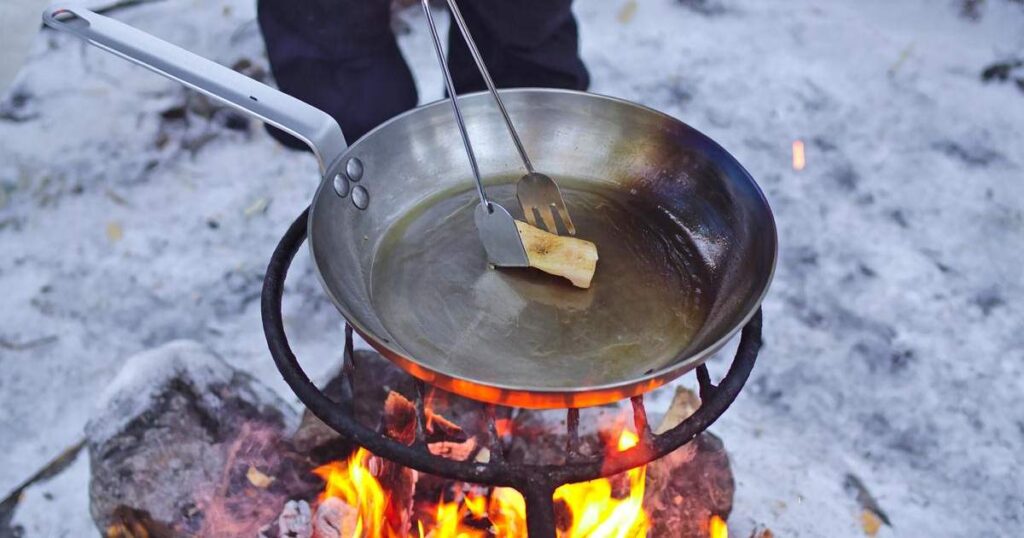
Now that we’ve explored carbon steel pans’ benefits and potential risks, it’s time to delve into the safety of using these versatile kitchen tools. Like any cookware material, carbon steel pans have their considerations, but with proper knowledge and precautions, they can be safely incorporated into your cooking routine.
Seasoning and Maintenance:
The seasoning process is a crucial aspect of using carbon steel pans safely. Properly seasoning your pan forms a natural non-stick surface that enhances cooking performance and protects against rust and potential chemical leaching.
Regular maintenance, such as gentle hand-washing, thorough drying, and periodic re-seasoning, will ensure the longevity and safety of your carbon steel pan.
Choosing the Right Brand:
To ensure the safety of your carbon steel pan, it’s essential to invest in high-quality, reputable brands known for producing chemical-free cookware. Researching and reading reviews can help you decide about the best brands available.
Mindful Cooking Practices:
When cooking with carbon steel pans, practice mindful cooking to prevent potential risks. Avoid cooking highly acidic or alkaline foods for extended periods, as these may cause minute amounts of iron to leach into the food.
While this is generally safe for most individuals, those with specific health conditions may want to limit their consumption of iron-rich foods prepared in carbon steel pans.
Proper Heat Management:
Carbon steel pans respond well to gradual heating and even heat distribution. To avoid warping or other heat-related issues, always allow the pan to heat up slowly and avoid exposure to extreme temperature changes.
Regular Inspections:
Periodically inspect your carbon steel pan for signs of wear, rust, or damage. If you notice any issues, address them promptly by re-seasoning or seeking professional advice.
By following these safety guidelines and adopting responsible cooking practices, you can enjoy the benefits of carbon steel pans while minimizing potential risks. These pans can be a valuable addition to your kitchen, providing excellent cooking performance, durability, and versatility for years.
Best Practices for Using Carbon Steel Pans Safely
Cooking with carbon steel pans can be a rewarding experience, and to ensure safety and longevity, it’s essential to follow some best practices. By incorporating these guidelines into your cooking routine, you can make the most of your carbon steel pan and enjoy its many benefits worry-free.
Seasoning and Re-Seasoning: Proper seasoning forms a natural non-stick surface on the carbon steel pan, preventing food from sticking and reducing the risk of chemical leaching. Before the first use, follow the manufacturer’s seasoning instructions. Regularly re-season your pan to maintain its non-stick properties and protect it from rust.
Hand-Washing Only: Avoid using the dishwasher to clean your carbon steel pan. Instead, gently hand-wash the pan with warm water and a soft sponge. Avoid abrasive scrubbers that may damage the seasoning or the pan’s surface.
Thorough Drying: After washing, thoroughly dry the pan with a towel to prevent moisture from causing rust. Additionally, place the pan on low heat for a few minutes to ensure complete drying.
Gradual Heating: Carbon steel pans respond well to gradual heating. Start with low to medium heat and allow the pan to warm slowly. Avoid using high heat from the beginning, as this may cause warping or other heat-related issues.
Use Cooking Oils Wisely: While carbon steel pans develop a non-stick surface, adding a small amount of cooking oil or butter can enhance the non-stick properties and add flavor to your dishes. Use oils with high smoke points, such as vegetable or canola oil, to prevent them from burning and affecting the food’s taste.
Mindful Cooking with Acidic Foods: Be cautious when cooking highly acidic or alkaline foods for extended periods, as they can react with the pan’s surface and lead to iron leaching. While this is generally safe for most individuals, those with specific health conditions should be mindful of their iron intake.
Avoid Drastic Temperature Changes: Carbon steel pans can be sensitive to drastic temperature changes. Avoid exposing the pan to extreme temperature variations, such as plunging it from high heat to cold water, as this may cause damage.
Regular Inspections: Periodically inspect your carbon steel pan for signs of wear, rust, or damage. If you notice any issues, address them promptly by re-seasoning or seeking professional advice.
By incorporating these best practices into your cooking routine, you can confidently use your carbon steel pan to create delicious meals while ensuring its safety and durability. Your carbon steel pan will become a reliable and cherished tool in your culinary journey with proper care and attention.
Comparing Carbon Steel Pans with Other Cookware
Here’s a comparison table that highlights the key differences between carbon steel pans and other popular types of cookware: cast iron, stainless steel, and non-stick pans.
| Aspect | Carbon Steel Pans | Cast Iron Pans | Stainless Steel Pans | Non-Stick Pans |
| Material Composition | Easy to clean; may require gentle handling to preserve the coating | Cast iron | Stainless steel | Aluminum with non-stick coating |
| Weight | Lightweight | Heavier | Moderate to Heavy | Lightweight |
| Heat Conductivity | Excellent heat conductor; even heat distribution | Excellent heat retention; slower heat distribution | Moderate heat conductivity; even heat distribution | Excellent heat conductor; even heat distribution |
| Non-Stick Surface | Develops a natural non-stick surface through seasoning | Develops a natural non-stick surface through seasoning | Requires cooking oil or butter for non-stick properties | Coated with non-stick material for easy food release |
| Versatility | Versatile; suitable for various cooking methods | Versatile; suitable for various cooking methods | Versatile; suitable for various cooking methods | Limited to low and medium heat cooking |
| Maintenance | Requires regular seasoning and careful drying | Requires regular seasoning and careful drying | Easy to clean; may develop stains over time | Easy to clean; may require gentle handling to preserve coating |
| Durability | Durable and long-lasting; resistant to chipping | Durable and long-lasting; may chip with rough use | Durable and long-lasting; resistant to corrosion | Not as durable; non-stick coating may wear off over time |
| Price | Affordable | Affordable | Moderate to Expensive | Affordable to Moderately Expensive |
| Cooking Health | Safe when properly seasoned; may leach iron in acidic foods | Safe; minimal leaching of iron | Safe; does not interact with food | Safe for most cooking; some concerns about non-stick coating at high temperatures |
| Cooking Techniques | Suitable for high-heat cooking, searing, frying, and baking | Suitable for high-heat cooking, searing, frying, and baking | Suitable for various cooking techniques | Limited to low and medium heat cooking |
| Ease of Use | Requires seasoning and regular maintenance | Requires seasoning and regular maintenance | Easy to use and clean | Easy to use and clean |
| Pros | – Lightweight and easy to handle – Excellent heat conductivity – Versatile cooking capabilities – Affordable | – Excellent heat retention – Versatile cooking capabilities – Durable and long-lasting – Affordable | – Resistant to corrosion and staining – Easy to clean – Suitable for various cooking methods | – Effortless food release – Easy to clean – Suitable for low and medium heat cooking |
| Cons | – Requires regular seasoning and drying – Potential leaching of iron in acidic foods | – Heavy and may require extra care – Prone to chipping if mishandled | – Moderate heat conductivity – May develop stains over time | – Not as durable as other materials – Concerns about non -stick coating health risks at high temperatures |
When choosing the right cookware for your kitchen, consider your cooking preferences, maintenance routine, and health concerns. Each type of cookware offers its unique benefits and drawbacks, so finding the perfect match will depend on your specific needs and cooking style.
Carbon Steel Pans and Health
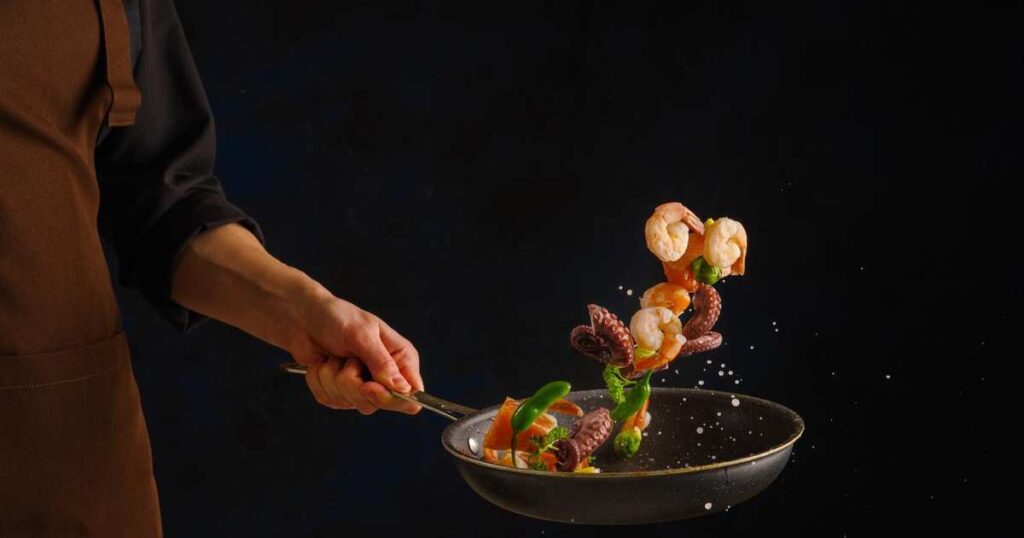
Concerns about cookware safety often arise, and it’s essential to understand how carbon steel pans impact our health. When used correctly and maintained appropriately, carbon steel pans are generally considered safe and can offer several health benefits.
Minimal Chemicals:
Unlike non-stick pans coated with synthetic materials, carbon steel pans do not contain harmful chemicals like PFOA or PFAS. These chemicals are a concern in some non-stick cookware, as they can be released into the air and food at high temperatures. With carbon steel pans, you can enjoy worry-free cooking without exposure to these potentially harmful substances.
Iron Enrichment:
Cooking with carbon steel pans can be a positive health aspect for many individuals. As these pans leach small amounts of iron into food, they can contribute to increasing dietary iron intake, which is crucial for preventing iron deficiency anemia, particularly in those at risk, such as pregnant women or individuals with iron-deficiency conditions.
Minimal Oil Usage:
Carbon steel pans develop a natural non-stick surface through seasoning, reducing the need for excessive oil or butter when cooking. Using less fat in your dishes can lead to healthier meals and lower calorie intake, making carbon steel pans an excellent choice for health-conscious cooks.
Controlled Seasoning:
By seasoning carbon steel pans at home, you control the ingredients used in the process. This means you can avoid potential allergens or harmful substances that might be present in pre-seasoned pans or non-stick coatings.
Proper Maintenance is Key:
While carbon steel pans can offer health benefits, it’s crucial to maintain them correctly. Regular seasoning, thorough drying after washing, and avoiding prolonged exposure to acidic foods are essential to ensure your carbon steel pan remains safe.
Addressing Iron Sensitivity:
Individuals with iron sensitivity or specific health conditions should be mindful of their dietary iron intake. While the iron leached from carbon steel pans is generally safe for most individuals, those with iron overload conditions like hemochromatosis should consider limiting their use of carbon steel pans.
Carbon steel pans are generally safe and can positively affect your cooking experience and health. By following proper seasoning and maintenance practices, you can enjoy the many benefits of carbon steel pans while minimizing potential risks. As with any cookware, using them responsibly and maintaining a well-balanced diet is essential to ensure your overall well-being.
Frequently Asked Questions
Is carbon steel pan safe for health?
Carbon steel pans are generally safe for health when used correctly and maintained properly. They do not contain harmful chemicals like some non-stick coatings. Carbon steel pans can even contribute to increasing dietary iron intake, which is beneficial for preventing iron deficiency anemia.
Which is safer, carbon steel or stainless steel?
Both carbon steel and stainless steel are considered safe for cooking. However, carbon steel pans may leach small amounts of iron into food, benefiting some individuals. On the other hand, stainless steel pans do not interact with food but offer excellent durability and resistance to corrosion.
Is carbon steel better than non-stick?
Choosing between carbon steel and non-stick pans depends on personal preferences and cooking needs. Carbon steel pans develop a natural non-stick surface through seasoning, while non-stick pans have a synthetic coating. Carbon steel pans are more durable and versatile, while non-stick pans are ideal for low and medium-heat cooking and effortless food release.
What foods should you not cook in carbon steel?
It’s best to avoid cooking highly acidic or alkaline foods in carbon steel pans for extended periods, as they may react with the pan’s surface and cause iron leaching. While this is generally safe for most individuals, those with iron overload conditions should be mindful of their dietary iron intake.
What is the healthiest type of cookware?
The healthiest type of cookware largely depends on individual preferences and cooking habits. Options like stainless steel, cast iron, and carbon steel are safe and offer various health benefits. Choose cookware free from harmful chemicals, and practice proper cooking and maintenance techniques to ensure the healthiest cooking experience.
Conclusion
Carbon steel pans are a fantastic addition to any kitchen, offering many benefits when used responsibly. These lightweight and versatile pans provide excellent heat conductivity, even distribution, and a natural non-stick surface through seasoning. With proper care and regular maintenance, carbon steel pans are generally safe for health, and their ability to leach iron into food can be advantageous for some individuals.
Compared to other cookware types like stainless steel, cast iron, and non-stick pans, carbon steel pans are a durable, cost-effective, and health-conscious option. By following best practices and mindful cooking, you can fully enjoy the benefits of carbon steel pans and confidently create delicious meals. Happy cooking!

